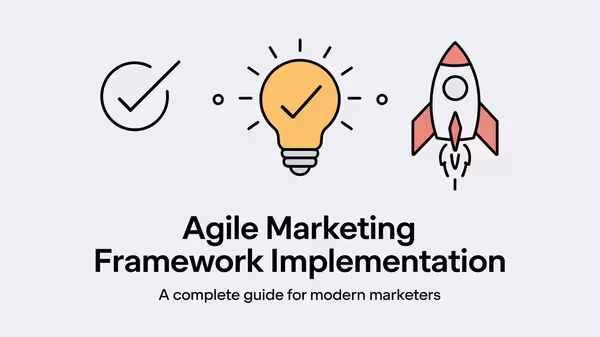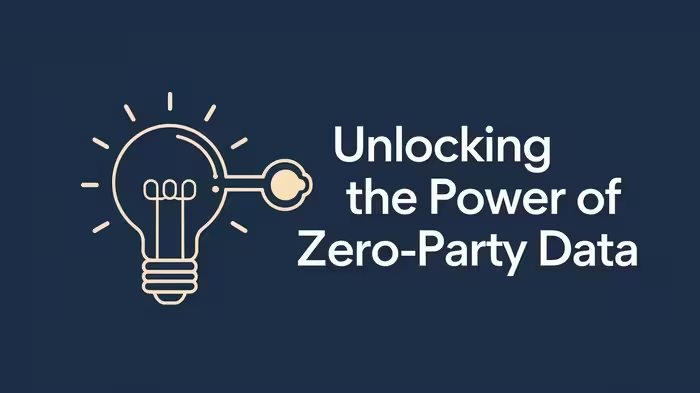In today’s fast-paced digital world, traditional marketing approaches often struggle to keep up with rapidly changing consumer needs and market dynamics. That’s where agile marketing comes in.
This comprehensive guide will walk you through everything you need to know about implementing an agile marketing framework in your organization.
Understanding Agile Marketing Basics
What is Agile Marketing?
Agile marketing is a tactical marketing approach where teams identify and focus their collective efforts on high-value projects, complete those projects cooperatively, measure their impact, and then continuously and incrementally improve the results over time. Think of it like building with LEGO blocks – you start with a foundation and keep adding pieces as you learn what works best.
Traditional vs. Agile Marketing Approaches
Traditional marketing typically follows a “waterfall” approach, where projects move sequentially from one phase to the next. Imagine trying to cook an entire thanksgiving dinner without tasting any of the dishes until they’re all done – that’s traditional marketing.
In contrast, agile marketing is like cooking with constant taste-testing and adjustments, ensuring each component is perfect before moving forward.
Core Principles of Agile Marketing
The foundation of agile marketing rests on several key principles:
- Responding to change over following a plan
- Rapid iterations over big campaigns
- Testing and data over opinions and conventions
- Many small experiments over a few large bets
- Individuals and interactions over one-size-fits-all
- Collaboration over silos and hierarchy
Benefits of Implementing Agile Marketing
Improved Team Collaboration
When teams adopt agile marketing, they break down traditional departmental silos. It’s like turning your marketing department from a bunch of solo artists into a well-coordinated orchestra. Teams meet daily, share updates, and work together to solve problems quickly.
Faster Response to Market Changes
In the digital age, market conditions can change overnight. Agile marketing allows teams to pivot quickly, like a speedboat compared to a cruise ship. You can adjust your strategy based on real-time data and customer feedback, ensuring your marketing efforts remain relevant and effective.
Better ROI and Resource Utilization
By focusing on short sprints and measuring results frequently, agile marketing helps teams optimize their resource allocation. It’s like having a GPS that constantly recalculates your route to find the most efficient path to your destination.
Key Components of Agile Marketing Framework
Sprint Planning and Execution
Sprints are short, focused periods (usually 2-4 weeks) where teams work on specific marketing initiatives. Each sprint starts with planning, where teams:
- Select priority items from the backlog
- Set clear sprint goals
- Break down tasks into manageable pieces
- Assign responsibilities
- Establish success metrics
Daily Stand-ups and Communication
Daily stand-up meetings keep everyone aligned and moving forward. These quick, 15-minute meetings answer three questions:
- What did you accomplish yesterday?
- What are you working on today?
- What obstacles are in your way?
Marketing Backlog Management
The marketing backlog is a prioritized list of all potential marketing activities, campaigns, and projects. Think of it as your team’s to-do list, constantly updated and reprioritized based on business needs and market conditions.
Performance Metrics and KPIs
Agile marketing relies heavily on data-driven decision making. Key metrics might include:
- Sprint velocity
- Campaign performance
- Customer engagement rates
- Lead generation metrics
- Conversion rates
- Return on marketing investment
Step-by-Step Implementation Guide
Preparation Phase
- Assess your current marketing processes
- Identify areas for improvement
- Set clear goals for agile implementation
- Gain stakeholder buy-in
- Create an implementation timeline
Team Structure and Roles
Define clear roles within your agile marketing team:
- Scrum Master
- Product Owner
- Marketing Team Members
- Stakeholders
Tools and Technology Setup
Select and implement appropriate tools for:
- Project management (like Jira or Trello)
- Communication (like Slack or Microsoft Teams)
- Performance tracking
- Asset management
Training and Skill Development
Invest in proper training for your team:
- Agile methodology basics
- Scrum framework understanding
- Tool usage and best practices
- Collaboration techniques
Common Challenges and Solutions
Resistance to Change
Challenge: Team members may resist new processes and workflows.
Solution: Start small, demonstrate early wins, and provide continuous support and training.
Resource Allocation
Challenge: Balancing regular marketing activities with agile projects.
Solution: Use clear prioritization frameworks and maintain flexible resource allocation.
Maintaining Consistency
Challenge: Keeping brand voice consistent across rapid iterations.
Solution: Develop clear guidelines and use templates where appropriate.
Best Practices and Success Stories
Real-world Implementation Examples
Many companies have successfully implemented agile marketing:
- IBM’s marketing transformation
- Spotify’s growth through agile marketing
- Adobe’s marketing agility journey
Tips for Long-term Success
- Start small and scale gradually
- Celebrate early wins
- Foster a culture of experimentation
- Keep communication channels open
- Regular retrospectives for continuous improvement
Conclusion
Implementing an agile marketing framework is a journey that requires patience, dedication, and continuous learning. While the transition may seem challenging at first, the benefits of increased flexibility, improved collaboration, and better results make it well worth the effort. Remember, agile is not just a methodology – it’s a mindset that can transform your marketing operations and help your team achieve better results in less time.
Frequently Asked Questions (FAQs)
- How long does it take to fully implement an agile marketing framework?
Most organizations take 6-12 months to fully transition to agile marketing, though initial benefits can be seen within the first few sprints. - Can agile marketing work for small teams?
Yes, agile principles can be adapted for teams of any size, often working even better in smaller, more nimble organizations. - What’s the minimum number of people needed for an agile marketing team?
While traditional Scrum teams often have 5-9 members, agile marketing can be implemented with as few as 3-4 team members. - Should we abandon all traditional marketing practices when going agile?
No, the best approach is usually a hybrid model that maintains successful traditional practices while incorporating agile methodologies. - How do we measure the success of our agile marketing implementation?
Success can be measured through improved team velocity, faster campaign deployment, better ROI, increased customer satisfaction, and team engagement levels.


